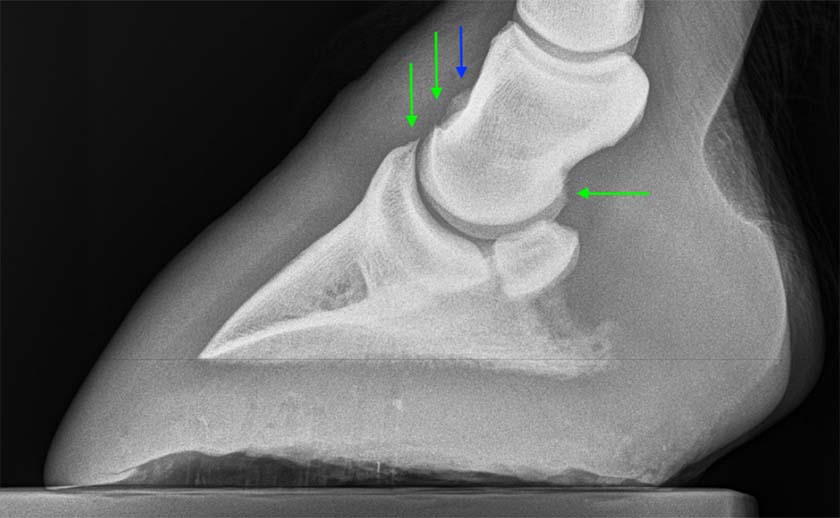Equine veterinarians are reporting that a 2.5% hydrogel originally designed as a cosmetic filler can help horses with early stage to chronic osteoarthritis (OA). In the latest of our series Pluto a 12-year-old mixed breed gelding that had been used for Hunting for over six years but developed progressive unevenness in the contact and reluctance to exercise over the last six months.
Examination:
A physical examination found the horse to be 3/5 lame in the right forelimb, with diagnostic analgesia isolating the source of lameness to the distal interphalangeal (coffin) joint. Upon needle placement into the joint copious, pale, low viscosity fluid poured out of the needle, indicating active inflammation within the joint. Radiographs identified osteoarthritic changes within the coffin joint. Namely sharp spur development of the short pastern and pedal bone (as indicated by the green arrows, image left) and irregular, lucent modelling of the dorsal aspect of the short pastern bone at the attachment site of the joint capsule (indicated by the blue arrow). In addition to this, there was significant foot imbalance, which was corrected first. After four weeks, the degree of poor performance was reduced but not abolished.
Treatment and Outcome:
2ml of Arthramid Vet was injected into the right fore coffin joint. The horse was then rested for 48 hours before commencing an ascending exercise program over two weeks to return to a full exercise regime. Over the space of four weeks, the clinical signs dissipated with the horse willingly and comfortably able to train and hunt. The joint was medicated 16 months previously, and there has not been a recurrence of clinical signs since that time.
